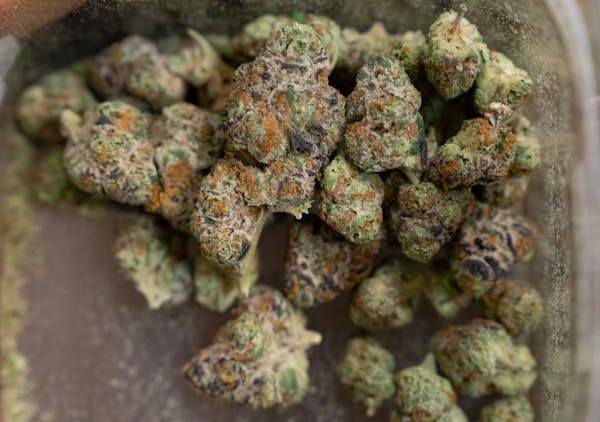Select law enforcement officers in Minnesota will soon have a new tool in their arsenal to catch cannabis-impaired drivers: a saliva-based roadside test.
As required under the state's new recreational marijuana law, Minnesota is launching a pilot project to gauge if different oral fluid testing tools can accurately detect drug use. The state is expected to roll out two different testing instruments next month that certified drug recognition experts will administer over the next year.
"These are by far and away the most commonly used [testing] units across the country," said Mike Hanson, director of Minnesota's Office of Traffic Safety. "I would expect that by this time next month, the units will be in the field and will be in use."
Law enforcement in some other states where marijuana is legal have used these roadside tests to help establish probable cause, similar to a preliminary breathalyzer screening for alcohol.
Minnesota officers could do the same in the future, but test results taken during the pilot period may not be used as cause for arrest or as evidence in court, according to the law.
The roadside tests being piloted are intended only for "the purpose of analyzing the practicality, accuracy, and efficacy of the instrument," according to the statute. Their results will be compared to laboratory blood testing.
Officers must obtain a driver's consent before administering the oral fluid test. They will ask drivers to swab their own mouth until the swab changes color, Hanson said.
The state plans to purchase about 100 tests for the pilot project at a cost of just under $5,000 apiece, Hanson said. Minnesota's public safety commissioner must report the results of the pilot project to the Legislature by February 2025.
A comprehensive effort
Michigan, which legalized marijuana by voter referendum in 2018, has studied oral fluid tests with cannabis and other drugs in recent years.
A report published by the Michigan State Police in 2021 found that oral fluid testing instruments were an effective preliminary screening tool but not as reliable as a blood test.
One of the problems with marijuana testing is the length of time THC stays in someone's body after the person consumes it and is no longer high. Further, every user's tolerance and actual intoxication will vary in a way that is not comparable to standard blood-alcohol level limits.
Oral fluid tests are more indicative of "how recent someone has smoked rather than how high they are," Sgt. Jim Janes, Michigan State Police drug recognition expert program leader, told the Star Tribune earlier this year.
Chuck DeWeese, a traffic safety consultant who previously worked for the New York State Governor's Traffic Safety Committee, agreed. The tests indicate recent drug use, not level of impairment, he said.
But DeWeese, who's advocated for roadside oral fluid testing around the country, believes the tests have proven to be an effective tool in helping officers build probable cause to make an arrest.
"You're still going to draw blood for the evidential, but this is a tool to assist law enforcement," DeWeese said.
Having more drug recognition experts trained to identify impairment is key for eventually convicting drugged drivers, Janes said, especially since oral fluid tests aren't admissible in court in Michigan, either.
Minnesota has more than 300 certified drug recognition experts (DREs) trained to identify drivers who are under the impairment of drugs, Hanson said, and the state is seeking to add even more before retail marijuana dispensaries open in early 2025.
"Our goal is to put enough DREs on the road where a street cop, anywhere in the state of Minnesota, within 20 or 30 minutes … can either have a DRE on scene or at the very least have a phone consultation," Hanson said. "We're being very proactive as we come up on legalization and when the dispensaries will actually open."
State public safety leaders are also raising awareness about the dangers of drugged driving through social media posts and news releases, among other things.
"Driving high is a DWI. It's that simple," Hanson said.
Star Tribune staff writer Brooks Johnson contributed to this report.
Latest updates

Cannabis in Minnesota

In Grand Rapids, Itasca Pride is planning its first event, but there is already pushback
One person shot at YMCA in Coon Rapids

BCA says man pointed pistol-style BB gun at officers before he was shot in Woodbury

Former diversity worker sues University of Minnesota after firing over swastika photo

